In today’s digital age, wearable technology has become an invaluable tool for parents concerned about their children’s health and fitness. These smart devices can capture a range of health metrics including heart rate, step count, and overall activity levels, giving parents real-time insights into their kids’ physical wellbeing. Studies show that regular usage of tracking technologies can lead to a 30% increase in activity levels among children aged 6 to 12, making wearables a powerful ally in combating sedentary lifestyles.
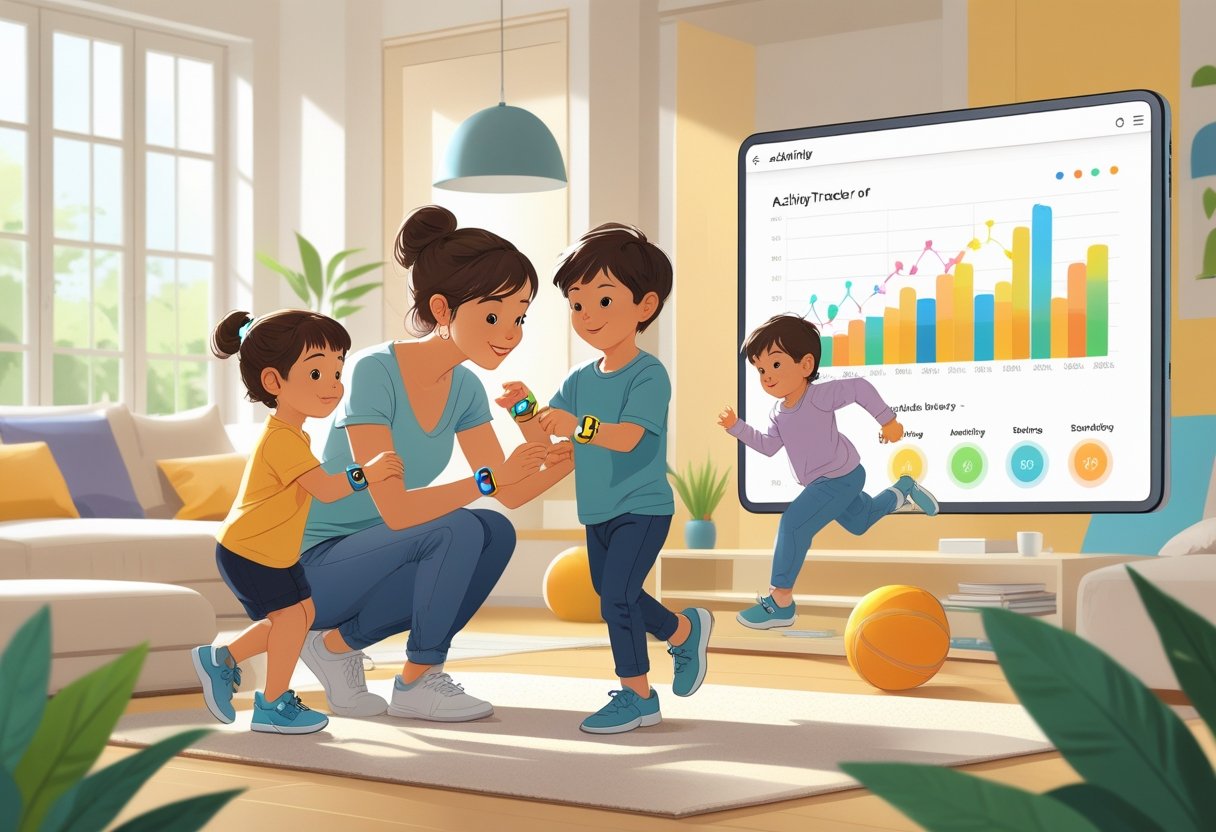
I’ve found that the best wearable devices for kids do more than just track steps—they gamify physical activity and make movement fun. Many parents are discovering how these devices can transform daily routines into exciting challenges that motivate children to stay active. With technology designed specifically for younger users, these wearables provide real-time data on various health metrics, helping both parents and healthcare providers monitor children’s fitness levels effectively.
As I explore this technology further, I’ve noticed that successful implementation of wearables in a family setting requires careful consideration of each family’s unique needs and values. The growing acceptance of wearable activity trackers in family environments shows that when chosen thoughtfully, these devices can become an integral part of promoting healthier habits for the entire household.
Key Takeaways
- Wearable technology can increase children’s physical activity by up to 30% through real-time tracking and gamification of movement.
- The right device should balance engaging features with accurate monitoring capabilities while respecting privacy concerns.
- Family involvement and consistent integration of wearable insights into daily routines maximize long-term benefits for children’s health.
Benefits of Monitoring Children’s Activity Levels
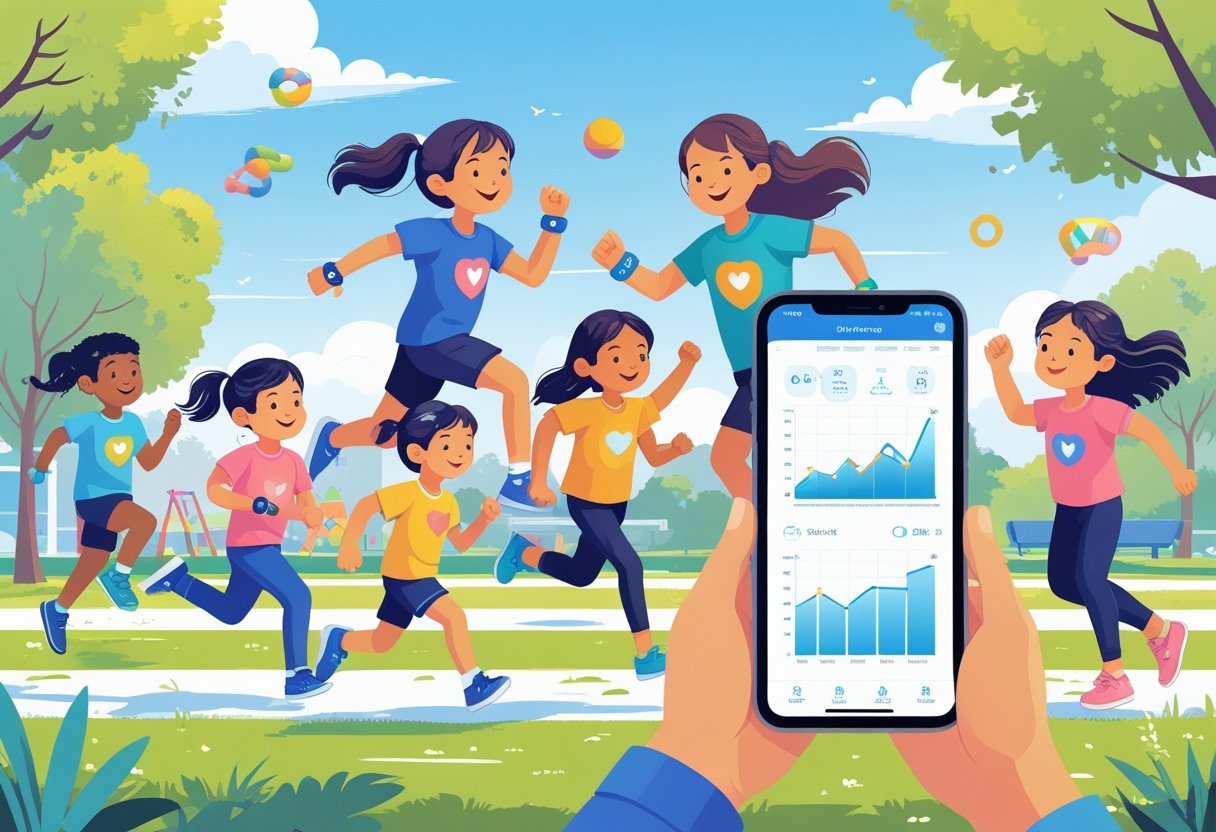
Tracking children’s physical activity offers significant advantages for both their immediate health and long-term development. Wearable technology provides parents with valuable insights that can help establish lifelong healthy habits.
Promoting Healthy Habits
Wearable activity trackers have proven to significantly increase daily step counts in children, demonstrating their effectiveness in motivating physical activity. I’ve found that when kids can visualize their progress through engaging interfaces, they’re more likely to embrace exercise as part of their routine.
These devices support children in developing self-monitoring skills, which are crucial for building sustainable healthy behaviors. The visual feedback creates a direct connection between actions and outcomes that children can easily understand.
Wearables also help children develop a sense of autonomy over their health decisions. Research shows these trackers promote autonomous motivation for exercise, empowering kids to make positive choices without constant parental nagging.
By establishing these habits early, I’ve seen children carry them into adolescence and adulthood, potentially reducing their risk of developing chronic health conditions later in life.
Early Detection of Inactivity
Wearable technology excels at capturing comprehensive health data, including heart rate, step count, and activity levels throughout the day. This ongoing monitoring allows me to identify patterns that might otherwise go unnoticed.
When activity levels consistently fall below recommendations, I can intervene early rather than waiting for physical symptoms or health issues to develop. This proactive approach is invaluable for preventing sedentary behavior from becoming entrenched.
Wearables can also detect subtle changes in physical activity that might indicate other issues such as:
- Social withdrawal
- Excessive screen time habits
- Changes in sleep patterns
- Decreased energy levels
The capability to capture a range of health data means I’m better equipped to have informed discussions with pediatricians when concerns arise. These objective measurements provide context that subjective observations alone cannot offer.
Encouraging Family Engagement
Fitness trackers create opportunities for shared activities and friendly competition among family members. I’ve implemented family step challenges that get everyone moving together while strengthening our bonds.
Many parents report that wearable activity trackers are easy for children to use and serve as useful tools for tracking their activities. This ease of use encourages consistent engagement from both parents and children.
The data collected becomes a conversation starter about health and wellness. I can celebrate achievements when my child exceeds their goals and offer supportive encouragement during less active periods.
Family walks, bike rides, or outdoor play sessions become more appealing when everyone can track their contribution. This has the added benefit of encouraging children to go outside and engage with their environment rather than defaulting to sedentary indoor activities.
Overview of Wearable Technology for Kids

Wearable technology for children has evolved from simple step counters to sophisticated devices that track various health metrics and activities. These devices come in different forms and offer features specifically designed with children’s needs and safety in mind.
Popular Types of Wearable Devices
Fitness trackers are the most common wearable devices for kids, typically worn on the wrist to monitor physical activity levels, steps taken, and sometimes sleep patterns. These devices are generally simplified versions of adult models with more durable designs and kid-friendly interfaces.
Smartwatches designed for children offer fitness tracking plus additional features like GPS location tracking, communication capabilities, and sometimes educational games. Some models like Garmin’s kids’ watches allow parents to monitor activity and set challenges.
Smart clothing with embedded sensors is an emerging category that can track movement, posture, and even vital signs without requiring the child to remember to wear a separate device. These garments are especially useful for younger children who might not be responsible enough for a watch.
GPS trackers come in various forms including clip-ons, watches, and shoe inserts. Their primary purpose is location monitoring rather than fitness tracking.
Key Features Relevant to Children
Durability is essential for children’s wearables, as kids are often rough with their belongings. Most kid-focused devices feature water resistance and shock-proof designs to withstand active play.
Simple, intuitive interfaces make devices accessible to children who may not be able to navigate complex menus. Many use color-coded indicators or simplified displays rather than detailed metrics.
Gamification elements transform physical activity into fun challenges, with virtual rewards and achievements that motivate consistent use. These features help children develop positive attitudes toward exercise.
Privacy and security measures are crucial, as these devices often collect sensitive data. Look for devices with strong parental controls and clear privacy policies.
Battery life is particularly important for children who may forget to charge devices regularly. The best options offer at least 5-7 days between charges.
Age-Appropriate Options
For preschoolers (ages 3-5), simple clip-on step counters or activity trackers with minimal features are most appropriate. These devices typically focus on encouraging movement through basic feedback like colored lights or simple animations.
Elementary school children (ages 6-10) can benefit from more interactive fitness trackers that include game elements and achievement badges. Research shows these devices can help establish healthy habits when used with parental guidance.
Pre-teens and teenagers (11+) may prefer more sophisticated devices that resemble adult fitness trackers but with age-appropriate content controls. Many offer social features allowing friendly competition with peers, which can increase motivation.
I recommend considering whether wearable technology might create unhealthy obsessions with tracking metrics in some children. Balance is key when introducing these devices to kids.
How Wearable Tech Tracks Kids’ Activity Levels
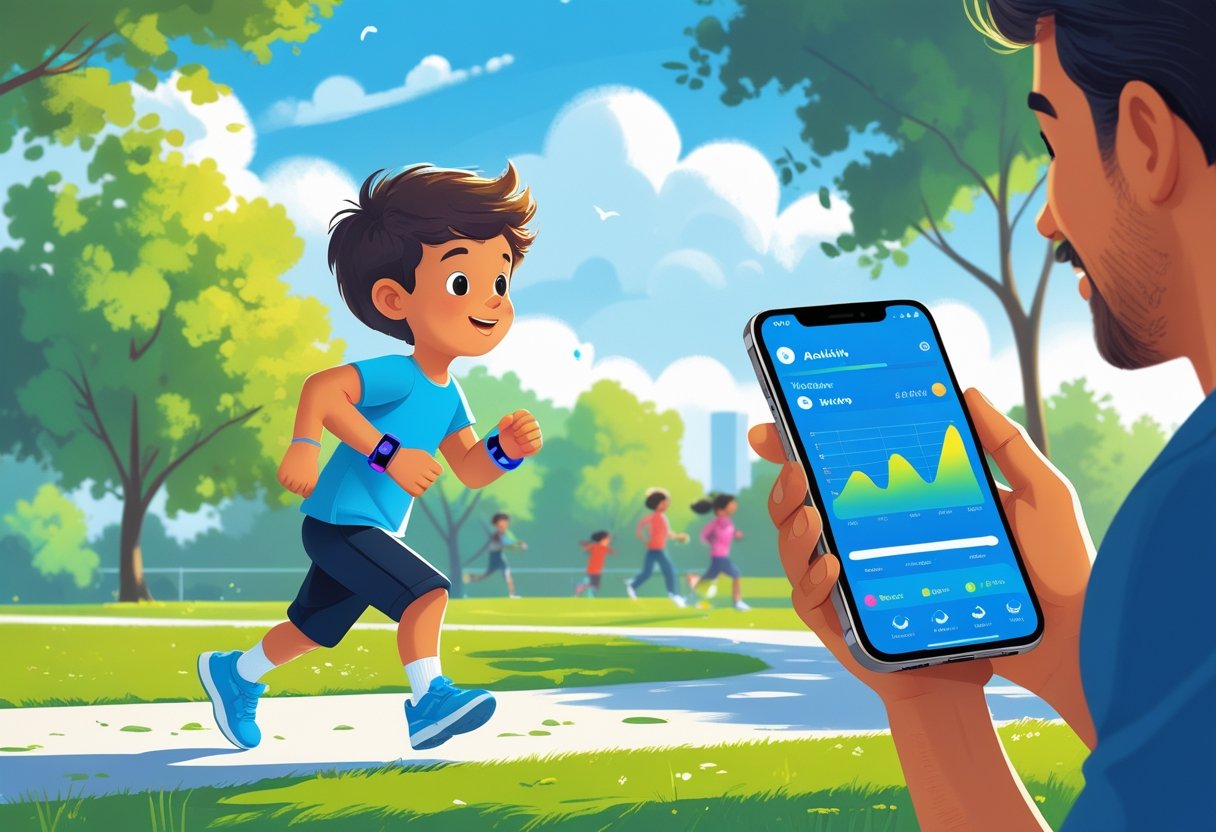
Modern wearable fitness devices use sophisticated technology to monitor children’s physical activity throughout the day. These devices combine multiple tracking methods to provide accurate insights into movement patterns, exercise intensity, and overall activity levels.
Sensors and Motion Tracking
Wearable activity trackers for children primarily rely on accelerometers to detect movement in all directions. These tiny sensors can identify when a child is walking, running, jumping, or even sleeping by measuring changes in velocity and direction. Some advanced devices also include gyroscopes that provide additional data about rotational movements.
Many children’s fitness trackers include heart rate monitors that use optical sensors to detect blood flow beneath the skin. This technology helps determine exercise intensity and calories burned during various activities.
Newer wearables may incorporate GPS functionality to track outdoor activities, showing routes, distance, and pace. This feature is particularly useful for older children who might go cycling or running independently.
The sensitivity of these sensors is often calibrated specifically for children’s movements, which differ from adult patterns in stride length, cadence, and overall intensity.
Data Collection and Accuracy
Wearable devices collect data continuously throughout the day, with most offering real-time health metrics that parents and healthcare providers can monitor. The information gathered typically includes step count, active minutes, calories burned, and sometimes sleep quality.
Most devices use algorithms specifically designed for children’s movement patterns to ensure accuracy. These algorithms filter out random arm movements that might be counted as steps in adult trackers.
Accuracy can vary between devices, with higher-quality trackers offering more precise measurements. Some research-grade wearables used in pediatric studies provide particularly reliable data that can help identify patterns and trends in activity levels.
Battery life is another important consideration, as longer-lasting devices can collect more continuous data without interruptions for charging.
Integration with Mobile Apps
Most children’s wearable trackers connect to smartphone apps via Bluetooth, creating a seamless experience for viewing and analyzing activity data. These apps translate raw sensor data into user-friendly visualizations that both parents and children can understand.
Many apps gamify the experience, turning physical activity into challenges, adventures, or competitions. This approach can promote autonomous motivation for exercise by making movement fun and rewarding.
The best apps allow customization of goals based on a child’s age, fitness level, and interests. Some even provide educational content about the importance of staying active.
Privacy features are crucial in these applications, with reputable companies offering strong data protection measures. I always recommend checking privacy policies before selecting a device for your child.
Integration with family accounts lets parents monitor activity while giving children appropriate independence in tracking their own progress.
Selecting the Right Wearable for Your Child
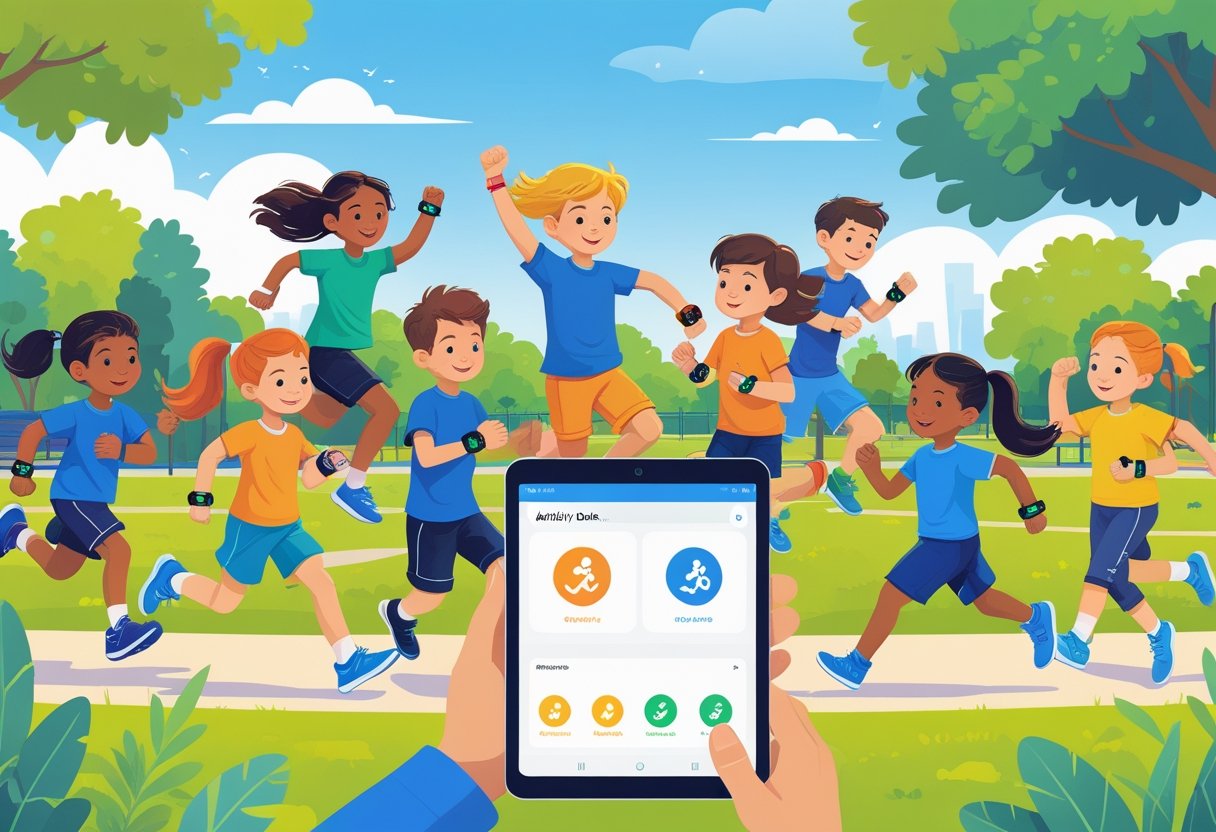
Finding the perfect wearable device for your child involves considering comfort, design features, and budget constraints. I’ve tested numerous options and found that the right choice depends on your specific tracking needs and your child’s preferences.
Durability and Comfort
When selecting a wearable device, durability should be your top priority. Children are naturally active and their devices need to withstand daily rough play, impacts, and exposure to various elements. I recommend looking for wearables with water resistance and scratch-proof screens.
The comfort factor cannot be overlooked. Lightweight devices with adjustable, soft bands prevent skin irritation during extended wear. I’ve found that silicone bands work best for younger children, while fabric options might appeal to older kids.
Band size adaptability is crucial as children grow quickly. Some premium models offer interchangeable bands, allowing for personalization and size adjustments as needed. This flexibility ensures the device remains comfortable throughout different growth stages.
Child-Friendly Design
Interface simplicity is essential for children’s wearables. Look for devices with intuitive controls and bright, easy-to-read displays. Many kids’ smartwatches feature colorful themes and simple icons that make navigation easier.
Battery life varies significantly between models. I recommend devices offering at least 24 hours of use between charges. For younger children who may forget to charge their devices, longer battery life proves especially valuable.
Consider these child-friendly features:
- Large, responsive buttons
- Engaging visual feedback
- Simple navigation
- Fun avatars or characters
- Age-appropriate interfaces
Security features are equally important. Some wearables include SOS buttons and GPS tracking capabilities that provide peace of mind for parents while teaching children responsibility.
Price and Value Considerations
Wearable device prices vary widely, typically ranging from $30 to $200+. I’ve found that spending more doesn’t always guarantee better performance. Mid-range options ($50-$100) often provide the best balance of features and reliability.
Consider these factors when evaluating value:
- Subscription costs (many GPS tracking features require monthly fees)
- Warranty length and coverage
- Battery replacement policy
- Software update frequency
- Customer support quality
Replacement costs for lost or damaged devices should factor into your decision. Some manufacturers offer discounted replacements, while others provide insurance options. I recommend checking if the company offers any family plans or activity tracking bundles that might provide better value.
The technological lifespan of these devices typically ranges from 2-3 years before becoming outdated. Prioritize devices from companies with strong track records of software support to ensure your investment remains functional and secure over time.
Privacy and Safety Concerns with Kid Wearables
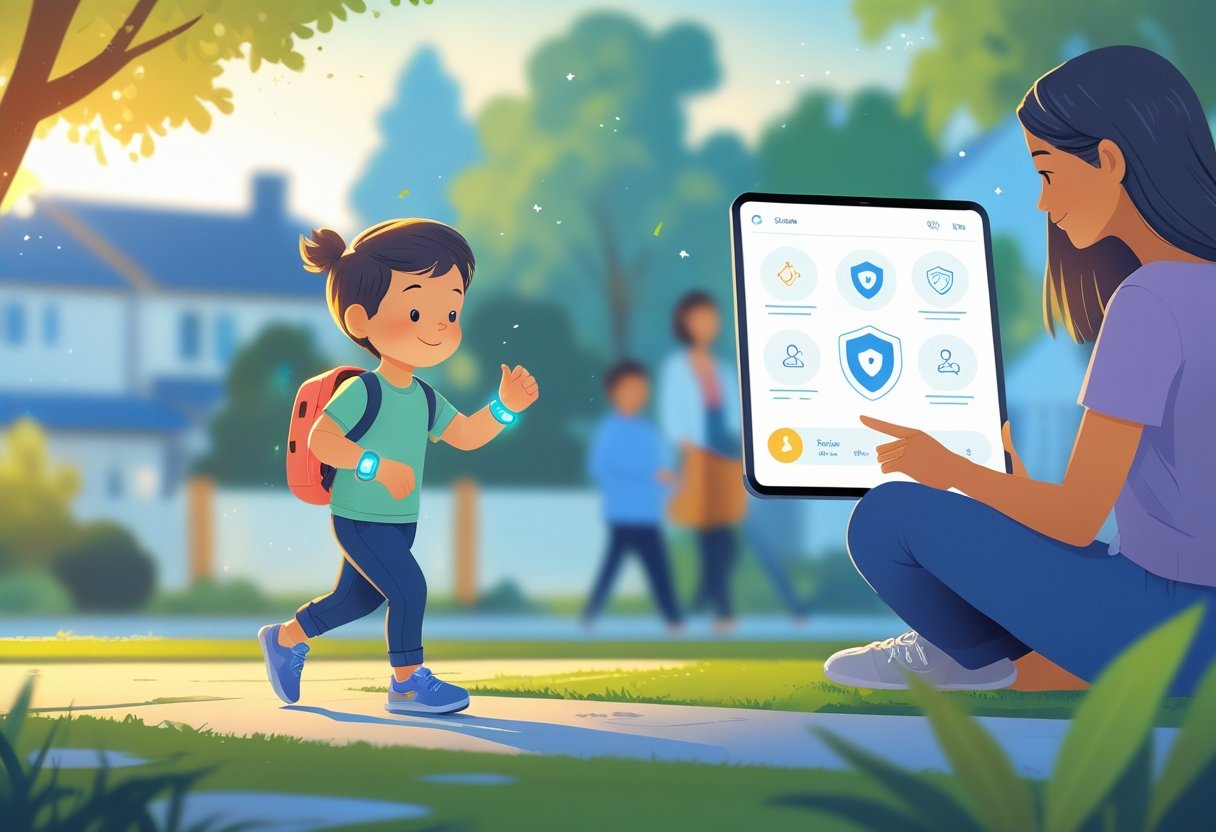
While wearable technology offers valuable insights into children’s physical activity, it also raises significant privacy and security concerns that parents should carefully consider. Proper data protection, appropriate controls, and understanding how companies handle information are essential factors in making informed decisions about these devices.
Data Security Measures
When selecting a wearable for your child, I recommend examining the device’s encryption protocols. Look for devices that use end-to-end encryption to protect data both in transit and at rest. Many leading children’s wearables now include PIN protection and two-factor authentication to prevent unauthorized access.
Check if the company has undergone independent security audits. These evaluations help verify that the device and its accompanying app meet established security standards.
Be wary of devices requiring excessive permissions on connected smartphones. A quality children’s wearable should request only necessary permissions to function properly.
Consider these security features:
- Automatic logout functionality
- Limited data retention periods
- Encrypted local storage options
- Regular security updates from the manufacturer
Parental Controls and Permissions
Effective parental controls should strike a balance between monitoring and respecting a child’s developing autonomy. I’ve found that the best wearables offer adjustable permission settings that can evolve as your child grows.
Look for devices with clearly labeled control panels that allow you to:
- Manage who can contact your child (for smartwatches with communication features)
- Control which apps can access the wearable’s data
- Set time limits for device usage
- Approve or deny third-party connection requests
Most quality wearables provide real-time notifications when someone attempts to access your child’s data. This feature allows for immediate intervention if suspicious activity occurs.
Consider involving your child in privacy decisions when age-appropriate. This approach teaches responsible digital citizenship while maintaining necessary safeguards.
Understanding Data Sharing Policies
Companies collecting your child’s data through wearables often have complex data sharing arrangements that warrant careful review. I always check the privacy policy for clear statements about data collection purposes and third-party sharing practices.
According to privacy concerns highlighted by experts, many wearables for children collect more information than necessary for their core functions. This can include location history, health metrics, and even behavioral patterns.
Important policy elements to examine:
- Whether data is anonymized before sharing
- Opt-out options for specific data collection
- Data deletion processes when accounts are closed
- Compliance with children’s privacy regulations like COPPA
Companies should provide straightforward explanations of how they protect children’s information. If a privacy policy seems deliberately complex or vague, I consider it a potential warning sign about the company’s data practices.
Encouraging Active Lifestyles Through Wearable Insights
Wearable activity trackers provide valuable data that can transform how families approach physical activity together. These devices offer real-time feedback that can be leveraged to create meaningful behavior changes and healthier habits in children.
Using Activity Data to Motivate Kids
Children respond well to visual representations of their activity levels. I’ve found that showing kids their daily step counts or active minutes through colorful charts and achievement badges in tracker apps often sparks their interest in moving more. Research shows that earning digital badges and rewards through fitness trackers can significantly boost motivation.
Setting personalized goals based on baseline activity data works better than arbitrary targets. For instance, if your child typically takes 5,000 steps daily, aim for 6,000 steps initially rather than jumping to 10,000.
Many kid-friendly fitness trackers include gamification elements that transform exercise into play. Features like virtual pets that “grow” with increased activity or interactive games unlocked through movement make fitness feel like entertainment rather than obligation.
Establishing Fun Family Challenges
Creating weekly family competitions based on tracker data builds healthy habits while strengthening relationships. I recommend starting with simple challenges like “Most Improved Steps” or “Weekend Warrior” that celebrate effort over absolute performance.
Studies investigating wearables in family settings show that shared goals increase accountability and participation. When parents actively participate in challenges, children are more likely to remain engaged.
Try these family challenge ideas:
- Step Streak Saturdays: Who can maintain activity for the longest time?
- Dance-Off Competitions: Use trackers to measure who generates the most movement during a 5-minute dance party
- Nature Scavenger Hunts: Track activity while exploring outdoors together
Remember to keep the focus on fun rather than competition. I’ve seen the best results when parents celebrate all participation rather than just winning. This positive reinforcement creates lasting motivation for the entire family.
Overcoming Challenges in Long-Term Use
Maintaining children’s interest in wearable activity trackers presents unique hurdles that require thoughtful strategies and consistent parental involvement. The key is finding the right balance between technology use and authentic physical engagement.
Maintaining Engagement Over Time
Children often experience initial excitement with new technology that fades as novelty wears off. I’ve found that setting achievable, progressive goals helps maintain interest in activity trackers. For example, start with 5,000 steps daily and gradually increase targets as fitness improves.
Gamification elements are particularly effective with children. Many wearables offer digital rewards and achievement badges that transform physical activity into an engaging game. These features can significantly boost long-term adherence.
Family challenges create meaningful motivation. I recommend implementing weekly family step competitions or group achievement goals where everyone works together toward a shared milestone.
Customization options like changeable bands or personalized screens help children feel ownership over their devices, increasing the likelihood they’ll continue wearing them consistently.
Balancing Screen Time with Physical Activity
The irony of using technology to promote physical activity isn’t lost on me. The key is establishing clear boundaries that prevent the tracker itself from becoming another sedentary screen experience.
I recommend limiting time spent reviewing tracker data to brief, scheduled check-ins rather than constant monitoring. This approach supports what experts call a broader wellness framework that balances technology with other activities.
Consider these practical approaches:
- Set designated “device-free” hours daily
- Focus on outdoor activities where the tracker is present but not the focus
- Use tracker data as conversation starters about health rather than the primary motivation
Parents should model healthy technology habits themselves. Children learn by example, so demonstrating balanced tech use is crucial for long-term success with wearable devices.
The Future of Wearable Tech for Kids’ Activity Tracking
The landscape of children’s wearable technology is rapidly evolving beyond simple step counting. I’ve noticed that modern devices are increasingly focusing on making physical activity fun rather than just tracking metrics.
Wearable technology is on the brink of transforming how we approach children’s education and physical activity. These innovations are redefining how young people engage with their environments.
Future wearables will likely emphasize play over self-monitoring. For example, some devices now allow children to make music through playing air guitar, encouraging movement without explicitly focusing on fitness tracking.
I expect to see more integration between safety features and activity monitoring. The newest devices provide a range of benefits including:
- Safety tracking with GPS capabilities
- Emergency communication features
- Fitness monitoring appropriate for young users
- Habit-building tools that encourage regular movement
- Gamified experiences that make exercise enjoyable
Research indicates that wearable technology can increase moderate-to-vigorous physical activity time in children and adolescents. This trend will likely continue as technology improves.
The most promising devices will balance increasing daily steps with privacy concerns and age-appropriate interfaces. I anticipate more sophisticated AI integration that can adapt to individual children’s activity patterns and preferences.
Durability and battery life improvements will make these devices more practical for active children who may not remember to charge them regularly.
Frequently Asked Questions
Parents often wonder about the practical aspects of using wearable technology with their children. These devices offer numerous benefits while raising important considerations about appropriate usage, privacy, and effectiveness for promoting healthy habits.
What are the benefits of using wearable technology for monitoring my child’s activity levels?
Wearable technology provides real-time insights into my child’s physical activity patterns. I can track their steps, active minutes, and even sleep quality to ensure they’re meeting recommended movement guidelines.
These devices help me identify sedentary periods and encourage more active play throughout the day. Many wearable activity trackers also create a supportive family environment where we can participate in fitness challenges together.
The data collected allows for meaningful conversations about health and physical activity, turning abstract concepts into tangible metrics my child can understand and engage with.
How do fitness trackers for kids encourage physical activity?
Many kid-focused fitness trackers incorporate gamification elements that make exercise fun. My child earns virtual rewards, badges, or points for reaching activity milestones, transforming physical movement into an engaging game.
These devices can send healthy reminders throughout the day, prompting my child to move when they’ve been inactive for too long. The visual feedback shows progress toward daily goals, creating motivation through visible achievements.
I’ve found that the social aspects of some trackers allow my child to safely compete with friends or family members, adding another layer of motivation through friendly competition.
At what age is it appropriate to introduce activity trackers to children?
I should consider my child’s maturity level and ability to responsibly handle the device before purchasing. Most manufacturers recommend their products for children ages 6 and up, though some specialized trackers target younger children.
Parents should ask: Is my child the right age for wearable technology? The answer depends on their interest in tracking activities and understanding of the concepts involved.
I’ve found that elementary school-aged children can begin developing healthy relationships with fitness data, while younger children might benefit more from simple step counters without complex metrics.
What safety features should parents look for in wearable tech for kids?
I prioritize devices with strong privacy settings that allow me to control what information is shared and with whom. Durable, water-resistant designs withstand active play and sports participation.
Location tracking capabilities can help me monitor my child’s whereabouts for safety purposes, with some devices offering geofencing alerts if my child leaves designated safe areas.
Adjustable bands that grow with my child ensure proper fit and comfort, while simple interfaces make the technology accessible without overwhelming young users.
How does wearable tech help in setting and tracking fitness goals for children?
I can establish personalized activity goals based on my child’s age, interests, and current fitness level. Many devices allow for customization of daily step counts or active minutes targets.
Progress visualization features help my child understand their achievements over time. Activity tracking creates opportunities to celebrate milestones and improvements rather than focusing solely on competitive metrics.
The consistent feedback loop helps establish routine physical activity as a normal part of daily life, potentially forming lifelong healthy habits.
What are the privacy concerns associated with children’s wearable devices?
I need to understand what data the device collects and where this information is stored. Many children’s wearables connect to apps that may collect personal information, location data, or activity patterns.
Reading privacy policies helps me determine if the company shares or sells my child’s data to third parties. I check for options to limit data collection and sharing within the app settings.
Strong password protection and regular security updates are essential features I look for to protect my child’s information from potential breaches or unauthorized access.
